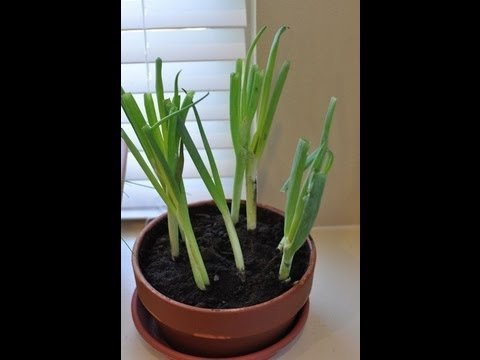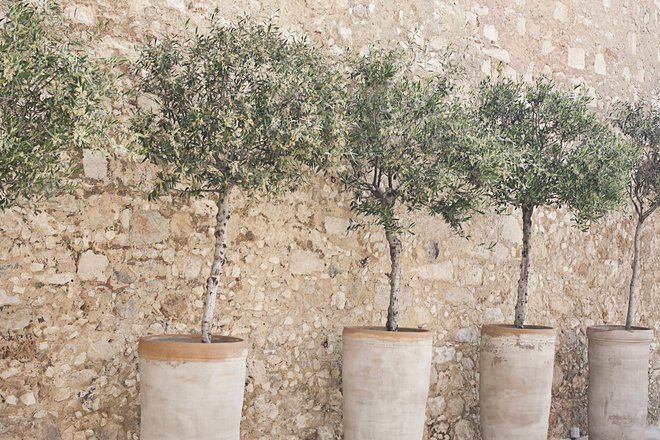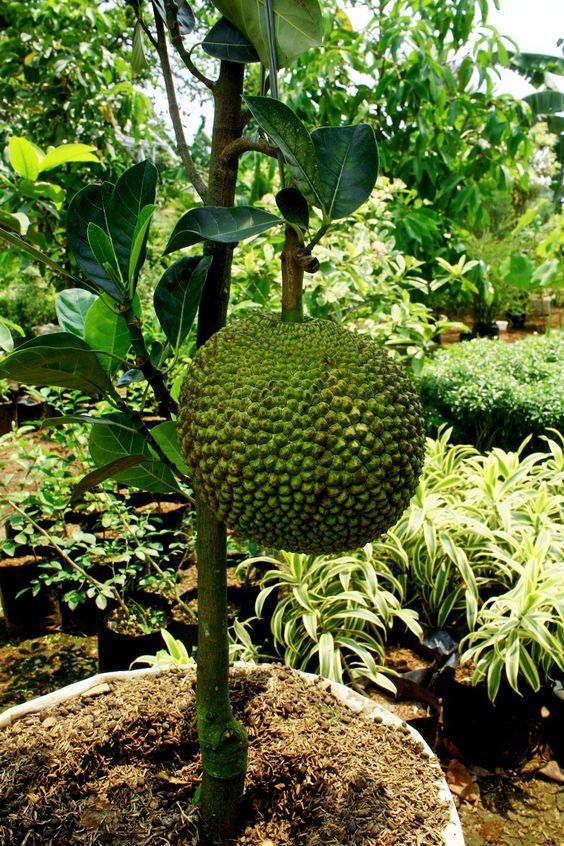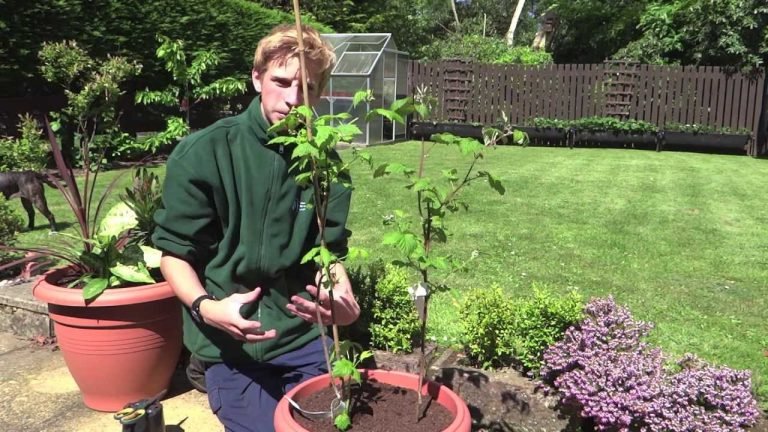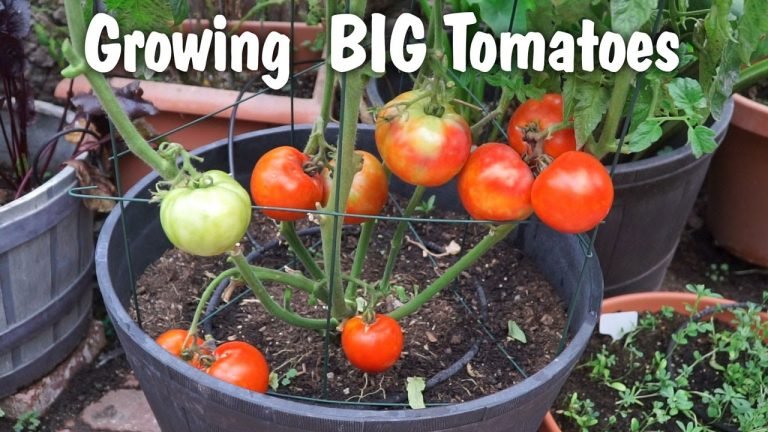how to grow winged beans in a pot – [Beginners Guide]

Hey there! Have you heard of winged beans? Also known as “goa beans”, they are a nutritious and versatile crop that are popular in Southeast Asian cuisine. Growing your own winged beans in a pot at home is a great idea for several reasons. In this article, I’ll share with you my personal experience and tips on how to grow winged beans in pots successfully.
First of all, growing winged beans in pots is a space-saving solution, especially for those who live in apartments or have limited garden space. By growing winged beans in pots, you can have fresh and delicious beans all year round, right on your balcony or windowsill!
Furthermore, growing winged beans in pots is also a cost-effective option. Instead of spending money on buying beans from the store, you can grow your own supply and save money in the long run. And the best part? You can control the quality of soil and water that your plants receive, ensuring a healthy and pesticide-free harvest.
So, are you ready to learn how to grow winged beans in a pot? Let’s get started!
Pot or container selection
When it comes to growing winged beans in a pot, choosing the right type of pot is key to success. Here are some important factors to consider:
Size: Winged beans are climbing plants that can grow up to 4 meters long, so you’ll need a pot that is at least 30 cm deep and wide. However, if you want to keep the plant compact, a 15-20 cm pot will do the trick.
Capacity: Winged beans have deep roots, so a pot with a capacity of 5-7 liters is recommended. This will provide enough space for the roots to grow and absorb the necessary nutrients.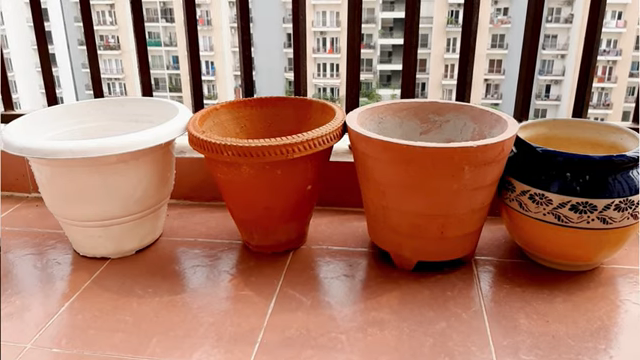
Construction: A pot made of plastic or terra cotta is ideal for growing winged beans. Plastic pots are lightweight and easy to move around, while terra cotta pots have better air flow, which can help prevent root rot. Make sure the pot has drainage holes at the bottom to allow excess water to escape.
In summary, when choosing a pot to grow winged beans, opt for one that is at least 30 cm deep and wide, with a capacity of 5-7 liters, and made of plastic or terra cotta with drainage holes. With the right pot, you’ll be on your way to a thriving and productive winged bean plant!
Make suitable soil mix
Soil is an important factor in the growth of winged beans. Here’s what you need to know about the type and mixture of soil required:
Type: Winged beans prefer a well-draining soil mix with a neutral pH of 6.0-7.0. You can use a commercial potting mix or create your own mix using equal parts of garden soil, compost, and perlite or sand.
Mixture: The soil mixture should be light and airy to prevent waterlogging and promote healthy root growth. A good way to achieve this is by adding compost, which provides essential nutrients, and perlite or sand, which improves drainage.
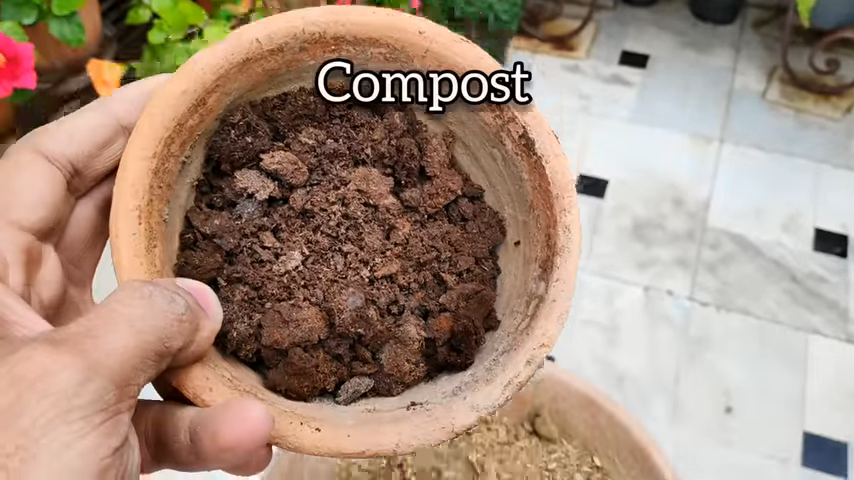
Importance of correct soil composition: The correct soil composition is essential for optimal growth of winged beans. Poor soil quality can lead to root rot, stunted growth, and a reduced yield. By using a well-draining soil mix with the right composition, you’ll be providing the best possible environment for your plants to thrive.
In conclusion, a well-draining soil mix with a neutral pH of 6.0-7.0, made up of equal parts of garden soil, compost, and perlite or sand, is ideal for growing winged beans. The correct soil composition is essential for optimal growth, so make sure to provide the best possible environment for your plants to thrive.
How to plant the winged beans?
Growing winged beans in a pot at home is easy and rewarding! Here’s a step-by-step guide on how to plant winged beans:
Step 1: Choose a healthy plant
Select a healthy and vigorous plant from your local nursery or grow your own from seed. Make sure the plant has a sturdy stem and well-developed leaves.

Step 2: Prepare the pot
Fill the pot with a well-draining soil mix as described in the previous answer. Make sure the pot has a drainage hole at the bottom to prevent waterlogging.

Step 3: Plant the bean
Plant the bean in the pot, making sure the top of the root ball is level with the soil surface. Water the plant well to settle the soil and remove any air pockets.

Step 4: Provide support
Winged beans are climbing plants, so they’ll need support to grow. Place a trellis, bamboo stake, or other supportive structure near the pot to give the plant something to climb on.
Step 5: Water and fertilize
Water the plant regularly to keep the soil moist but not waterlogged. Fertilize the plant every 2-3 weeks with a balanced fertilizer to promote healthy growth and a bountiful harvest.

Step 6: Harvest the beans
Harvest the beans when they are young and tender, usually after 2-3 months. Pick the beans regularly to encourage the plant to produce more.
By following these simple steps, you’ll be well on your way to growing a productive and healthy winged bean plant in a pot at home. Good luck and happy growing!
How to care for winged beans?
Taking care of winged beans in a pot at home is straightforward and can be done with a few basic steps. Here’s what you need to know about the care requirements for winged beans:
Watering Requirement
Frequency: Winged beans require regular watering to keep the soil consistently moist. Water the plant deeply once or twice a week, depending on the temperature and humidity in your area. Make sure to check the soil moisture level regularly and adjust watering accordingly.
Amount: Winged beans prefer moist soil, but they don’t like to be waterlogged. To avoid waterlogging, be sure to water the plant deeply and allow the excess water to drain out the bottom of the pot.
Fertilizer Requirement
Type: Winged beans prefer a balanced fertilizer with an equal ratio of nitrogen, phosphorus, and potassium (NPK). You can use a water-soluble fertilizer or a slow-release fertilizer, depending on your preference.
Frequency: Fertilize the plant every 2-3 weeks during the growing season. Always follow the manufacturer’s instructions for the correct amount and frequency of application.
Sunlight Needs
Amount: Winged beans need full sun to partial shade for optimal growth. Place the pot in a location that receives at least 6 hours of direct sunlight per day.
Intensity: Winged beans are heat-tolerant, but they prefer a cool environment. If you live in a hot climate, place the pot in a location that receives some shade during the hottest part of the day.
Pruning & Training
Pruning: Prune the plant regularly to promote bushier growth and remove any yellow or dead leaves. Cut the plant back to encourage new growth and improve air circulation.
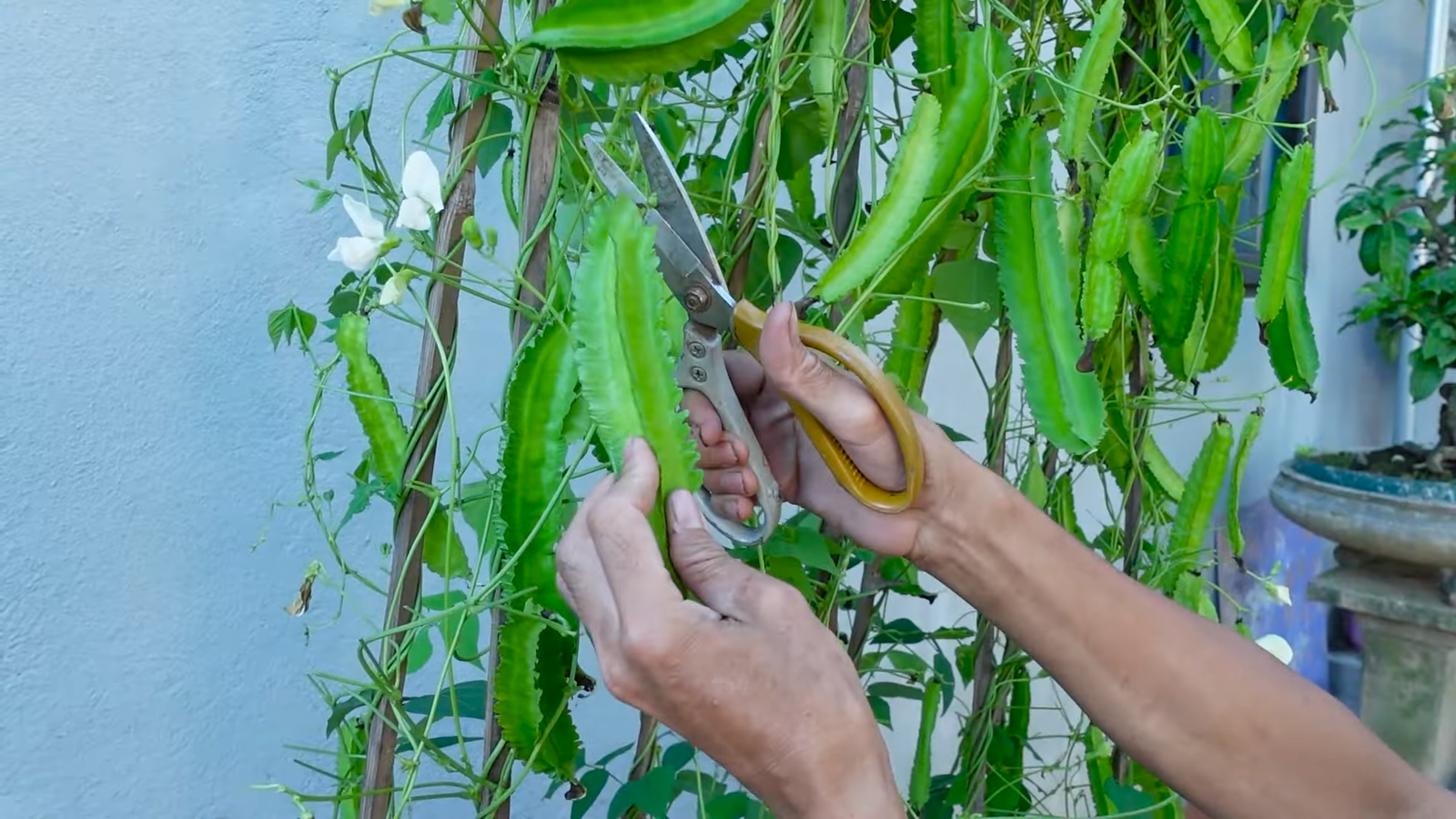
Training: Winged beans are climbing plants, so they’ll need support to grow. Place a trellis, bamboo stake, or other supportive structure near the pot to give the plant something to climb on. As the plant grows, guide the stem to the support to keep it growing in the desired direction.
Other Care
Staking: If the plant becomes top-heavy, you may need to stake it for support. Insert a stake into the pot near the stem and tie the stem to the stake with a soft tie, such as a piece of cloth.
Pest control: Winged beans are relatively pest-resistant, but you may still encounter problems with aphids or other pests. Regularly inspect the plant for signs of damage and take action if necessary.
By following these simple care steps, you’ll be able to grow a healthy and productive winged bean plant in a pot at home. Good luck and happy gardening!
Common problems
Growing winged beans in a pot at home can be a rewarding experience, but it’s not without its challenges. Here are some of the most common problems that you may encounter and how to solve them:
Pests and Insects
Aphids: Aphids are small, sap-sucking insects that can damage the leaves and stems of the plant. To control aphids, you can use a strong blast of water to knock them off the plant, or you can use an insecticidal soap or neem oil solution.
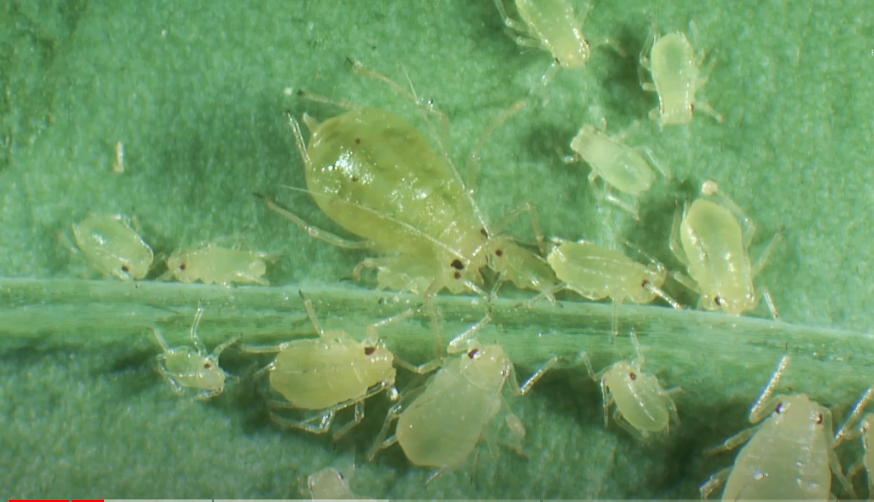
Mites: Mites are tiny spider-like insects that can cause yellowing and bronzing of the leaves. To control mites, you can use a miticide or a solution of water and dish soap.
Diseases
Powdery Mildew: Powdery mildew is a fungal disease that causes a white powdery growth on the leaves and stems. To prevent powdery mildew, make sure to provide good air circulation and avoid overhead watering. If the plant becomes infected, you can treat it with a fungicide.
Root Rot: Root rot is a fungal disease that can occur when the soil is too wet or poorly drained. To prevent root rot, make sure to plant the winged beans in a well-draining soil mix and water the plant deeply, but not too frequently. If the plant becomes infected, you may need to replant it in a new pot with fresh soil.
Poor Production
Light: Winged beans need full sun to partial shade for optimal growth and production. If the plant is not getting enough light, it may not produce as many pods. Move the pot to a location that receives more sunlight, or supplement natural light with grow lights.
Fertilizer: Winged beans need regular fertilization for optimal growth and production. Make sure to fertilize the plant every 2-3 weeks during the growing season, using a balanced fertilizer with an equal ratio of nitrogen, phosphorus, and potassium (NPK).
Other Issues
Leggy Growth: Winged beans can become leggy and spindly if they are not given enough light or if they are not pruned regularly. To prevent leggy growth, make sure to provide enough light and prune the plant regularly to encourage bushier growth.
Yellowing Leaves: Winged beans may yellow and drop leaves due to stress, disease, or pest infestation. If the leaves are yellowing, inspect the plant for pests, disease, or other issues and take appropriate action.
By being aware of these common problems, you can take steps to prevent or solve them and grow a healthy and productive winged bean plant in a pot at home. If you have any further questions or concerns, consult a local gardening expert for advice.
Harvesting & storing homegrown winged beans
When to Harvest Winged Beans
Winged beans are ready for harvest when they are young and tender, typically between 60-80 days after planting. You can start harvesting the pods when they are about 4-6 inches long, and before the seeds inside start to harden and mature. It’s best to pick the pods regularly, at least every 2-3 days, as this will encourage the plant to produce more pods.
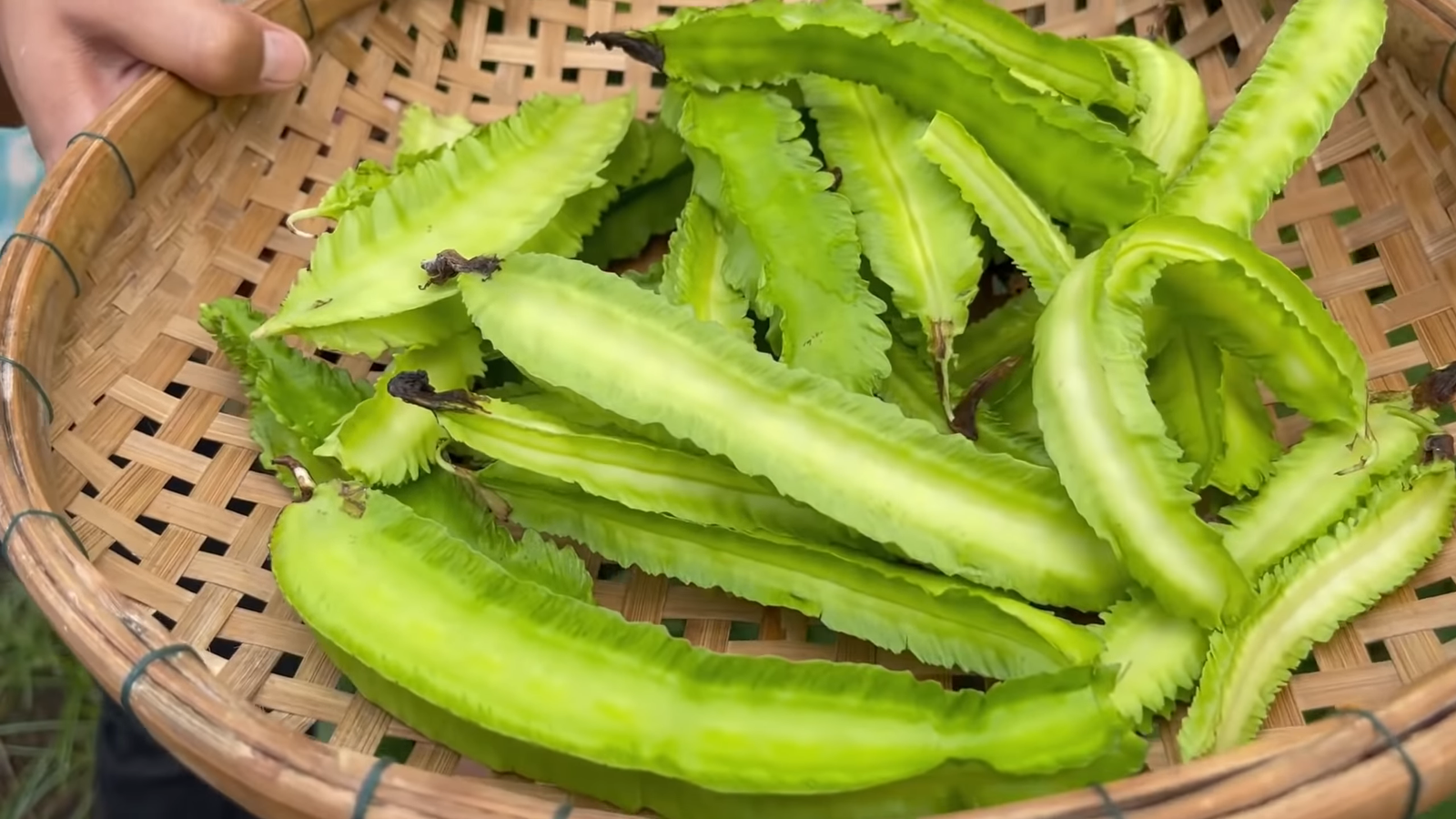
How to Harvest and Store Winged Beans
- To harvest the pods, use a sharp knife or scissors to cut the stem of the pod. Be sure to leave a small stem attached to the plant, which will encourage more pods to grow.
- If you are storing the pods for later use, it’s best to store them in an airtight container in the refrigerator, where they will keep for up to a week. If you have a large harvest, you can also freeze the pods for longer storage, up to 6 months.

Important: Before storing the pods, it is essential to wash and dry them thoroughly to remove any dirt or debris that may affect their quality.
Harvesting and storing your homegrown winged beans is an important step to get the most out of your crop. By following these steps, you can ensure that your beans will be fresh and ready to use in all your favorite recipes.
Growing winged beans in container – Conclusion
Conclusion
Growing winged beans in a pot at home is a great way to have fresh and healthy produce available at your fingertips. With the right pot, soil, and care, these plants can thrive and provide you with delicious pods for many months.
Here are some of the key takeaways from this guide:
- The right type of pot, with good drainage and a capacity of at least 5-gallons, is essential for growing winged beans.
- A well-draining soil mix with a balanced pH is important for optimal growth.
- Planting, caring for, and harvesting your winged beans is simple and straightforward with the right guidance.
- Regular watering, proper sunlight, and timely fertilization are crucial to the health and growth of winged beans in a pot.
- Common problems such as pests, diseases, and poor production can be prevented and controlled with proper care.
- Harvesting the pods when they are young and tender, and storing them properly, will ensure you have a bountiful and delicious crop.
We hope this guide has been helpful in providing you with all the information you need to grow winged beans in a pot at home. Whether you are a seasoned gardener or a beginner, you are sure to find success with this easy-to-grow vegetable. So, grab a pot, some soil, and get started today!



